Mobile App Trends 2025: Empowering Shopping, Gaming, and Lifestyle with Next-Gen Technology
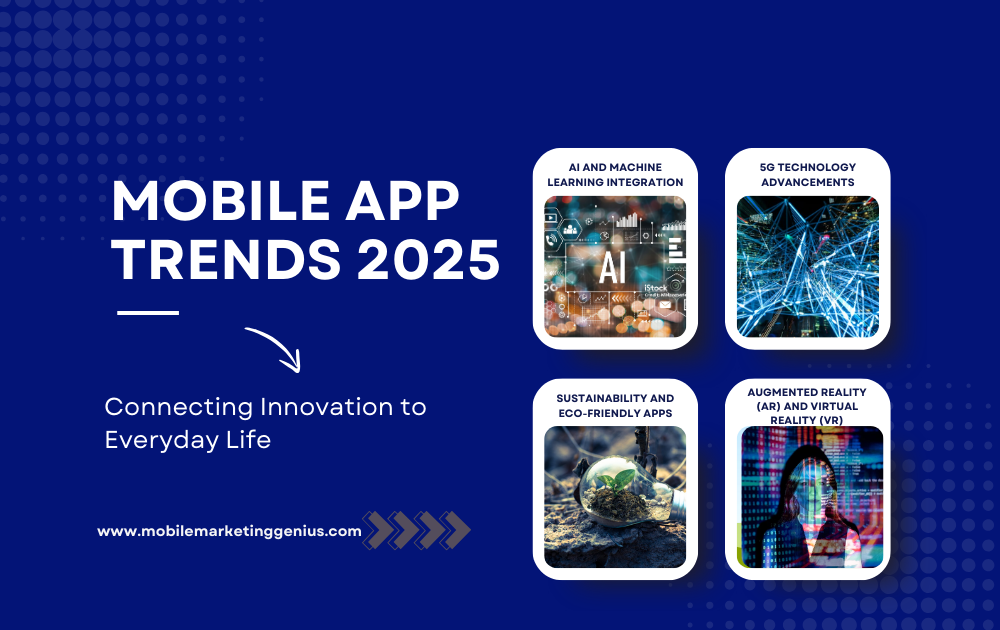
As we step into 2025, mobile app trends 2025 continue to revolutionize the way we interact with the digital world. From simplifying everyday tasks to offering immersive experiences, mobile apps are deeply woven into the fabric of modern life. With over 6 billion smartphone users worldwide, the demand for innovative, efficient, and personalized apps has never been higher. This year promises a wave of transformative trends that will redefine key industries, including shopping, gaming, lifestyle, finance, travel, education, food and drinks, health and fitness, communication, and entertainment.
Technological advancements like artificial intelligence (AI), Internet of Things (IoT), 5G networks, augmented reality (AR), and virtual reality (VR) are fueling this evolution. These technologies are enabling mobile apps to provide more intuitive, engaging, and seamless user experiences than ever before. Additionally, sustainability and privacy have emerged as critical focus areas, prompting developers to design eco-friendly and secure applications that meet users’ growing expectations.
In this article, we will explore the leading mobile app trends across diverse sectors, uncovering how they are reshaping industries and empowering users in 2025. Whether you are a business owner, developer, or consumer, understanding these trends is essential to staying ahead in an increasingly app-driven world. Prepare to discover how mobile apps are set to redefine the digital landscape this year.
Table of Contents
General Mobile App Trends 2025
1. AI and Machine Learning Integration
Artificial intelligence (AI) and machine learning (ML) continue to transform mobile app functionalities in 2025. Apps are becoming smarter, offering hyper-personalized experiences tailored to individual user behaviors and preferences. For instance, shopping apps leverage AI to provide product recommendations based on browsing history, while health and fitness apps use ML to create customized fitness and diet plans. Predictive analytics is another game-changer, allowing apps to anticipate user needs, such as suggesting content or services before users even search for them. AI-powered chatbots and voice assistants enhance customer service, providing real-time solutions with human-like interactions. Moreover, AI is improving accessibility for differently-abled users, ensuring inclusivity across app platforms. When combined with IoT, AI-powered apps can gather data from connected devices like wearables or smart home systems, offering real-time insights and automated recommendations for seamless user experiences.
70% of mobile apps will integrate artificial intelligence by 2025 to enhance personalization and user experiences.”
Source: Gartner
2. 5G Technology Advancements
The widespread adoption of 5G technology is revolutionizing mobile app performance in 2025. Faster internet speeds and low latency are enabling real-time experiences, particularly in gaming, streaming, and communication apps. Cloud gaming platforms now offer high-quality multiplayer experiences without lag, while streaming apps deliver 4K and even 8K content seamlessly. Additionally, 5G empowers AR and VR apps, making immersive experiences smoother and more engaging. Businesses are leveraging 5G to build sophisticated mobile apps that require high data processing, such as telehealth platforms and remote work tools. The technology also fosters innovation in IoT-enabled apps, enhancing real-time connectivity between devices. For example, IoT apps for smart homes can instantly sync multiple devices, such as adjusting lighting, temperature, or security settings in response to user commands or environmental data.
By 2025, 5G will account for over 50% of global mobile connections, enhancing real-time app functionalities.”
Source: GSMA
3. Sustainability and Eco-Friendly Apps
With the global push toward sustainability, 2025 sees a rise in eco-friendly mobile apps. These apps cater to environmentally conscious users, promoting sustainable habits such as waste reduction, energy conservation, and ethical shopping. For example, lifestyle and shopping apps highlight eco-friendly brands, while travel apps offer options for carbon-neutral trips. Food delivery apps are incorporating features that minimize plastic use, such as eco-friendly packaging and reusable containers. Additionally, businesses are adopting sustainable practices in app development, such as reducing energy consumption during app usage. IoT enhances sustainability in mobile apps by enabling real-time monitoring and control of energy use. For instance, apps connected to smart thermostats or appliances can optimize energy efficiency and provide users with insights to reduce their carbon footprint.
By 2025, there will be over 30 billion IoT-connected devices, significantly influencing mobile app development.”
Source: IoT Analytics
4. Augmented Reality (AR) and Virtual Reality (VR)
Augmented reality (AR) and virtual reality (VR) are taking center stage in 2025, revolutionizing user engagement across sectors. Shopping apps use AR to provide virtual try-ons for clothing and accessories, enhancing the online shopping experience. In the gaming world, VR offers immersive gameplay, transporting users into lifelike virtual environments. Travel apps employ AR for virtual tours, allowing users to explore destinations before booking. Education apps leverage AR and VR to make learning interactive and fun, especially in fields like science and history. With advancements in hardware, such as AR glasses, these technologies are becoming more accessible, making them essential for modern mobile apps. IoT integration further enhances AR and VR experiences by connecting these apps with smart devices. For example, IoT-enabled fitness apps can use AR to overlay workout routines onto real-world spaces or sync with smart home devices for a fully immersive environment.
The AR/VR market in mobile apps is expected to grow to $198 billion by 2025, transforming sectors like gaming, shopping, and education.”
Source: Grand View Research
Mobile App Trends by Sector
1. Shopping Apps
1.1 AI-Driven Shopping Assistants
AI has revolutionized shopping apps, making them smarter and more user-centric. Apps like Amazon and eBay use machine learning to analyze users’ purchase history, preferences, and browsing patterns to recommend tailored products. These virtual shopping assistants provide dynamic price alerts, restock reminders, and even suggest complementary items. AI also powers predictive searches, helping users find desired products quickly. For example, Amazon’s “frequently bought together” feature simplifies shopping by bundling related products.
1.2 AR/VR Shopping Experiences
Apps like IKEA Place and Sephora Virtual Artist use augmented reality (AR) to transform online shopping into an interactive experience. IKEA allows users to visualize furniture in their space, while Sephora enables virtual makeup try-ons. These technologies eliminate uncertainty in online shopping, boosting customer satisfaction. AR/VR technology bridges the gap between physical and digital stores, enhancing user confidence and increasing sales conversions.
1.3 Seamless Payment Solutions
Shopping apps like Shopify and PayPal simplify online transactions with features like one-click payments and buy-now-pay-later options. Shopify’s payment gateway integrates multiple methods, including digital wallets and cryptocurrencies. PayPal’s secure platform enhances trust with instant refunds and fraud detection. These payment innovations reduce cart abandonment rates and cater to diverse customer needs.
2. Gaming Apps
2.1 Cloud Gaming Platforms
Cloud gaming apps like NVIDIA GeForce NOW and Google Stadia are redefining gaming. They enable users to play high-quality games on any device without expensive hardware. Powered by 5G, these apps provide seamless gameplay with minimal latency. NVIDIA GeForce NOW offers real-time updates and synchronization, while Google Stadia integrates social gaming, allowing players to compete globally.
2.2 Enhanced Multiplayer Experiences
Games such as Fortnite and PUBG Mobile are leading the way in real-time multiplayer interactions. Using 5G technology, these apps deliver smooth gaming with instant communication among players. Enhanced matchmaking systems ensure balanced gameplay, while live tournaments create an engaging experience. Fortnite’s cross-platform capability further enhances its appeal.
2.3 Gamification in Non-Gaming Apps
Non-gaming apps like Duolingo and Fitbit are incorporating gamification to boost user engagement. Duolingo uses progress streaks, badges, and leaderboards to motivate language learners, while Fitbit rewards fitness milestones. Gamification elements transform routine tasks into enjoyable activities, driving user retention.
3. Lifestyle Apps
3.1 Mindfulness and Productivity Apps
Apps like Headspace and Calm focus on mental health, offering guided meditations, sleep aids, and stress management tools. These apps are particularly popular in 2025, as users prioritize wellness. Headspace includes productivity-boosting content tailored to work-life balance.
3.2 Integration with Wearables
Lifestyle apps such as Fitbit and Samsung Health seamlessly sync with wearables, tracking activities like steps, sleep, and heart rate. Fitbit’s intuitive app offers personalized insights, while Samsung Health integrates with smart devices for comprehensive health monitoring.
3.3 Behavioral Data Personalization
Apps like Pinterest and Spotify utilize behavioral data to deliver personalized recommendations. Pinterest curates boards based on user interests, while Spotify creates custom playlists using listening habits. Personalization enhances user satisfaction and loyalty.
3.4 IoT-Powered Lifestyle Solutions
IoT technology extends lifestyle apps by connecting them to smart devices, creating cohesive ecosystems. Apps like Google Home link to smart appliances, enabling users to automate daily routines such as adjusting lights for a morning meditation or syncing music with fitness activities. These integrations enhance convenience and personalization.
4. Finance Apps
4.1 AI-Powered Financial Planning
Apps like Mint and YNAB use AI to help users manage budgets, track expenses, and plan savings. Mint offers real-time alerts for spending limits, while YNAB provides proactive financial advice based on user goals.
4.2 Mobile Wallet Expansion
Mobile wallets like Google Wallet and Apple Pay dominate the finance sector. These apps now support cryptocurrency payments, biometric authentication, and peer-to-peer transfers, making transactions faster and more secure.
4.3 Blockchain Integration
Apps like Revolut and Crypto.com leverage blockchain for transparent and secure transactions. Revolut supports multi-currency accounts, while Crypto.com facilitates seamless cryptocurrency trading. Blockchain ensures user data security and reduces fraud.
4.4 IoT in Finance Apps
IoT integration in finance apps enhances transaction efficiency and security. Devices like smartwatches allow contactless payments via apps such as Apple Pay. IoT-enabled systems also track financial data from smart homes, such as utility costs, to streamline budgeting.
5. Travel Apps
5.1 Virtual Tours with AR/VR
Travel apps like AirPano and Google Earth offer immersive virtual tours, allowing users to explore destinations before booking trips. This AR/VR feature enhances trip planning by providing a realistic preview of attractions.
5.2 AI Chatbots for Assistance
Apps like Hopper and Booking.com utilize AI chatbots to provide 24/7 customer support. These chatbots offer instant booking confirmations, travel tips, and personalized itineraries, simplifying travel experiences.
5.3 Eco-Travel Planning
Apps like TripIt promote eco-conscious travel by suggesting carbon-neutral flight options and green accommodations. These features resonate with environmentally aware users.
5.4 IoT-Enabled Travel Features
IoT enhances travel apps by integrating with smart devices for seamless experiences. Smart luggage connected to apps like Trackdot provides real-time tracking, while IoT-enabled rental cars sync with apps to offer navigation assistance and remote control capabilities.
6. Education Apps
6.1 Personalized Learning Tools
Education apps like Khan Academy and Coursera provide AI-driven personalized learning plans. Khan Academy adapts courses to user proficiency, while Coursera offers customized professional development paths.
6.2 Gamified Learning
Apps like Quizlet and Duolingo incorporate gamification to make learning fun. Quizlet’s flashcards and games enhance retention, while Duolingo motivates users with daily streaks and rewards.
6.3 Hybrid Learning Solutions
Apps like Zoom and Microsoft Teams facilitate hybrid education by bridging online and in-person learning with virtual classrooms, breakout rooms, and collaboration tools.
6.4 IoT in Education Apps
IoT transforms education apps by enabling smart classrooms and interactive learning. Apps like Nearpod sync with IoT devices, such as AR glasses and smartboards, for immersive learning experiences, enhancing engagement and collaboration.
7. Food and Drinks Apps
7.1 AI Meal Planning
Apps like Yummly and Mealime use AI to recommend recipes and generate grocery lists based on dietary preferences. These apps simplify meal prep for busy users.
7.2 Sustainable Food Delivery
Apps like Too Good To Go and Olio reduce food waste by connecting users to surplus food from local restaurants. These platforms align with sustainability goals.
7.3 Voice-Activated Ordering
Apps like Uber Eats and Domino’s now allow users to place orders using voice commands through Alexa or Google Assistant, making the process hands-free.
7.4 IoT in Food Apps
IoT integration in food apps enhances the user experience by connecting with smart kitchen appliances. Apps like Innit sync with smart fridges to track inventory and suggest recipes, while IoT-enabled ovens adjust cooking settings based on app instructions.
8. Health and Fitness Apps
8.1 Real-Time Health Tracking
Apps like Strava and MyFitnessPal integrate with IoT devices to monitor real-time fitness data. These apps provide actionable insights for achieving health goals.
8.2 Holistic Wellness Platforms
Apps like Calm and FitOn focus on both mental and physical health, offering meditation sessions, workout plans, and stress-relief techniques.
8.3 Virtual Coaching and Group Fitness
Apps like Peloton and Future offer virtual personal trainers and live fitness classes, enabling users to stay fit from home.
8.4 IoT in Health and Fitness Apps
IoT enhances health apps by connecting to smart devices like wearables, fitness equipment, and home health monitors. Apps like Fitbit use IoT to sync with devices that track metrics such as heart rate, sleep, and oxygen levels, providing a holistic view of user health.
9. Communication Apps
9.1 Immersive AR Features
Apps like Snapchat and Zoom are adopting AR for filters, backgrounds, and interactive video calls, enhancing communication experiences.
9.2 Privacy-Focused Messaging
Apps like Signal and Telegram prioritize encryption and privacy, ensuring secure conversations. These features are vital as users become more privacy-conscious.
9.3 Cross-Platform Compatibility
Apps like WhatsApp and Messenger enable seamless communication across devices, improving user connectivity.
10. Entertainment Apps
10.1 Short-Form Video Content
Apps like TikTok and Instagram Reels dominate with engaging short-form videos, keeping users hooked with algorithm-driven content.
10.2 AR/VR Streaming Platforms
Apps like Netflix VR and YouTube VR create immersive entertainment experiences, pushing the boundaries of traditional streaming.
10.3 AI-Curated Content
Entertainment apps like Spotify and HBO Max leverage AI to recommend personalized playlists and shows, enhancing user engagement.
Table: Mobile App Trends @2025 by Sector
| Sector | Key Trends | Examples |
|---|---|---|
| Shopping Apps | AI-driven recommendations, AR/VR virtual shopping, seamless payment solutions | Amazon, IKEA Place, Shopify |
| Gaming Apps | Cloud gaming platforms, enhanced multiplayer experiences, gamification in non-gaming apps | NVIDIA GeForce NOW, Fortnite, Duolingo |
| Lifestyle Apps | Mindfulness tools, wearable integration, IoT-powered smart home connectivity | Headspace, Fitbit, Google Home |
| Finance Apps | AI financial planning, mobile wallet expansion, blockchain integration | Mint, Apple Pay, Revolut |
| Travel Apps | Virtual tours with AR/VR, AI chatbots, IoT-enabled smart devices for travel | AirPano, Hopper, TripIt |
| Education Apps | Personalized learning tools, gamified learning, IoT for smart classrooms | Khan Academy, Quizlet, Nearpod |
| Food & Drinks Apps | AI meal planning, sustainable food delivery, IoT-connected smart kitchens | Yummly, Too Good To Go, Innit |
| Health & Fitness | Real-time tracking with wearables, holistic wellness platforms, IoT-enabled health monitoring | MyFitnessPal, Calm, Fitbit |
| Communication Apps | Immersive AR features, privacy-focused messaging, cross-platform compatibility | Snapchat, Signal, WhatsApp |
| Entertainment Apps | Short-form video content, AR/VR streaming, AI-curated personalized recommendations | TikTok, Netflix VR, Spotify |
Challenges in Mobile App Development
1. Balancing Innovation with Privacy and Data Security
As mobile apps become increasingly advanced, balancing innovation with user privacy and data security remains a major challenge. Apps that leverage AI, AR, and IoT require large volumes of personal data, raising concerns about data breaches and misuse. Stricter regulations like GDPR and CCPA mandate app developers to ensure transparency and compliance, adding complexity to the development process. For instance, health and fitness apps must secure sensitive data, while shopping apps face challenges in protecting payment information. Developers must invest in robust encryption methods, regular security updates, and transparent data policies. Additionally, gaining user trust while providing innovative features is a delicate task, requiring a fine balance between functionality and security.
2. Overcoming App Fatigue in a Saturated Market
The mobile app market is oversaturated, with millions of apps vying for user attention. This results in “app fatigue,” where users are overwhelmed and reluctant to download new apps. To stand out, developers must focus on offering unique, user-centric features that address specific pain points. For example, niche apps like Too Good To Go (sustainable food delivery) succeed by targeting eco-conscious users. However, achieving this differentiation often requires extensive market research, creative design, and aggressive marketing strategies, which can be resource-intensive. Furthermore, apps must ensure seamless user experiences, as technical glitches or complex interfaces can lead to high uninstall rates.
3. Addressing Accessibility and Inclusivity
Ensuring accessibility and inclusivity in mobile apps is another critical challenge. Developers must design apps that cater to users with diverse abilities and backgrounds, complying with accessibility standards like WCAG. For instance, communication apps should support voice commands and text-to-speech features for visually impaired users. Similarly, apps must offer language localization to appeal to global audiences. However, integrating these features can increase development time and costs, especially for startups with limited resources. Ignoring inclusivity can alienate significant user segments, impacting an app’s reach and reputation. Balancing inclusivity with budget constraints remains a persistent challenge for developers.
Opportunities in Mobile App Development
1. Leveraging AI and Machine Learning for Personalization
AI and machine learning offer significant opportunities to enhance user experiences through personalization. Apps can analyze user behavior, preferences, and habits to deliver tailored content, services, and recommendations. For example, shopping apps like Amazon utilize AI to suggest products based on browsing history, while fitness apps like MyFitnessPal create customized health plans. Personalization not only increases user engagement but also boosts retention and revenue through targeted upselling and cross-selling. Additionally, predictive analytics powered by AI can help apps anticipate user needs, such as suggesting nearby attractions in travel apps. By leveraging AI, developers can create more intuitive and engaging apps, fostering customer loyalty.
2. Expanding Reach with 5G and IoT Integration
The rollout of 5G networks and the growing adoption of IoT devices open up new possibilities for app developers. 5G enables faster data speeds and reduced latency, making apps more responsive and reliable. Gaming apps like Google Stadia and communication platforms like Zoom benefit from smoother real-time interactions. IoT integration enhances the functionality of health apps like Fitbit, which sync with wearables for real-time tracking. Developers can also explore smart home apps that control IoT devices, such as Google Home. These technologies not only enhance user experiences but also create avenues for developing innovative solutions in sectors like healthcare, education, and logistics.
3. Tapping into Emerging Markets and Niches
Emerging markets and niche audiences present significant growth opportunities for mobile apps. Regions like Africa, South Asia, and Latin America are experiencing rapid smartphone adoption, creating a demand for localized apps. Developers can cater to these markets by offering language-specific interfaces and addressing regional needs, such as mobile payment solutions or agriculture-focused apps. Additionally, niche markets, such as apps for eco-conscious users or remote work solutions, are gaining traction. Apps like Too Good To Go (sustainability) and Slack (team collaboration) succeed by addressing specific pain points. By identifying untapped markets and aligning with global trends, developers can achieve scalability and success.
Conclusion
Mobile apps continue to shape our digital experiences, evolving rapidly to meet user demands and technological advancements. As we move into 2025, the landscape is defined by groundbreaking innovations like AI, 5G, AR, and IoT, which enhance personalization, connectivity, and user engagement across industries. From shopping and gaming to finance and health, mobile apps are more integrated into our lives than ever before, offering convenience, entertainment, and solutions to everyday challenges.
However, this progress comes with challenges. Developers must navigate issues such as data privacy, app fatigue, and the need for inclusivity while ensuring seamless performance. Despite these hurdles, the opportunities are immense. Leveraging AI for personalization, integrating 5G and IoT for real-time functionality, and tapping into emerging markets can unlock significant growth potential.
The future of mobile apps is bright, and as these trends unfold, they promise to redefine how we interact with technology, enhancing lives and driving progress across industries.

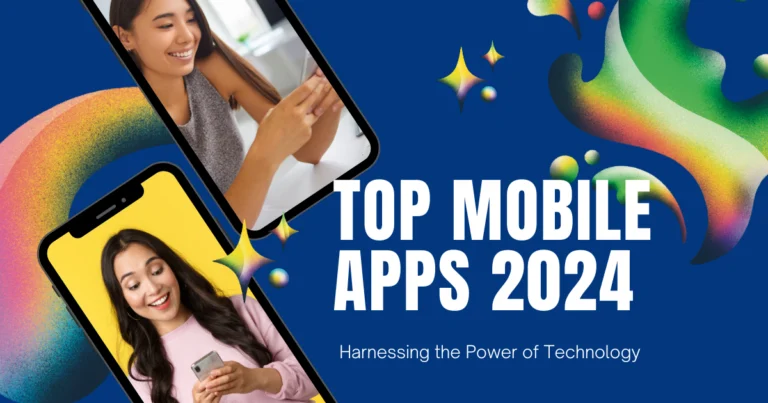
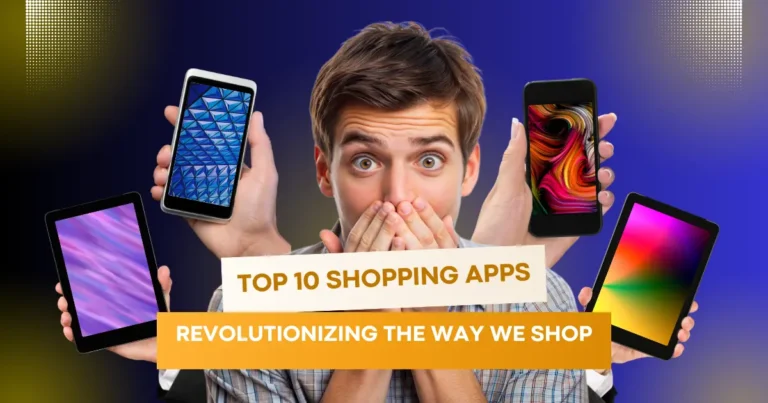
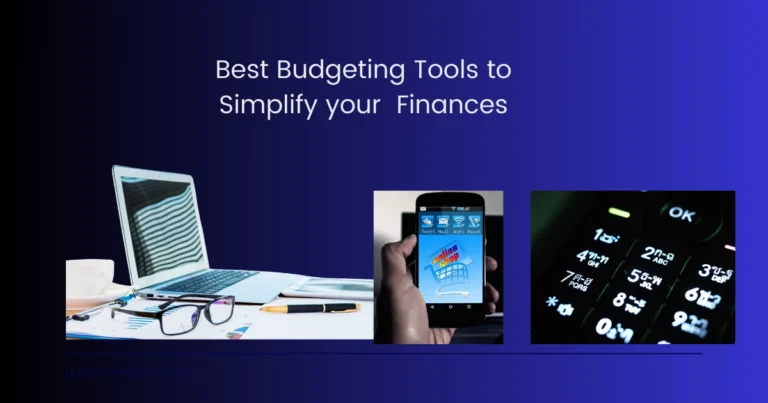
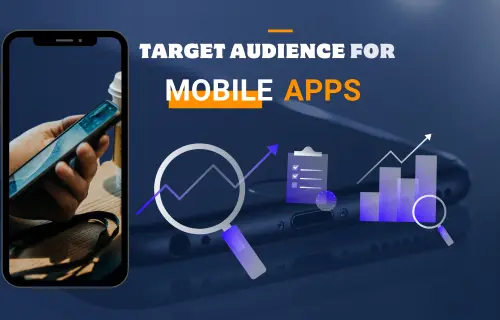
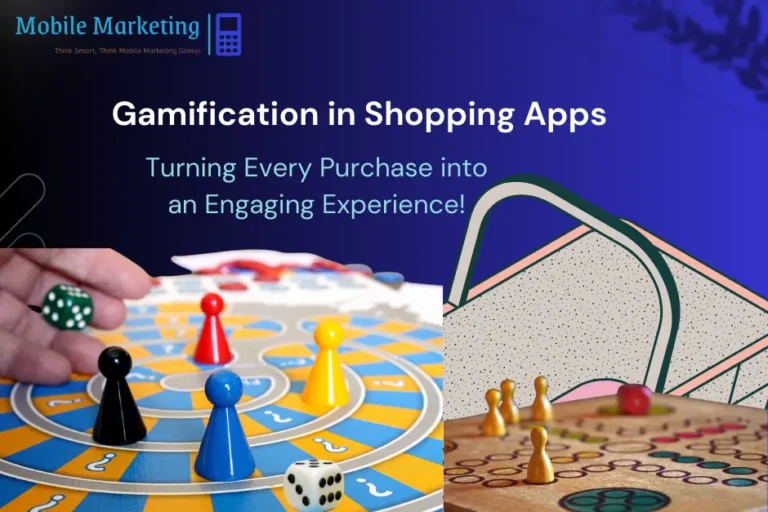
2 Comments
Comments are closed.